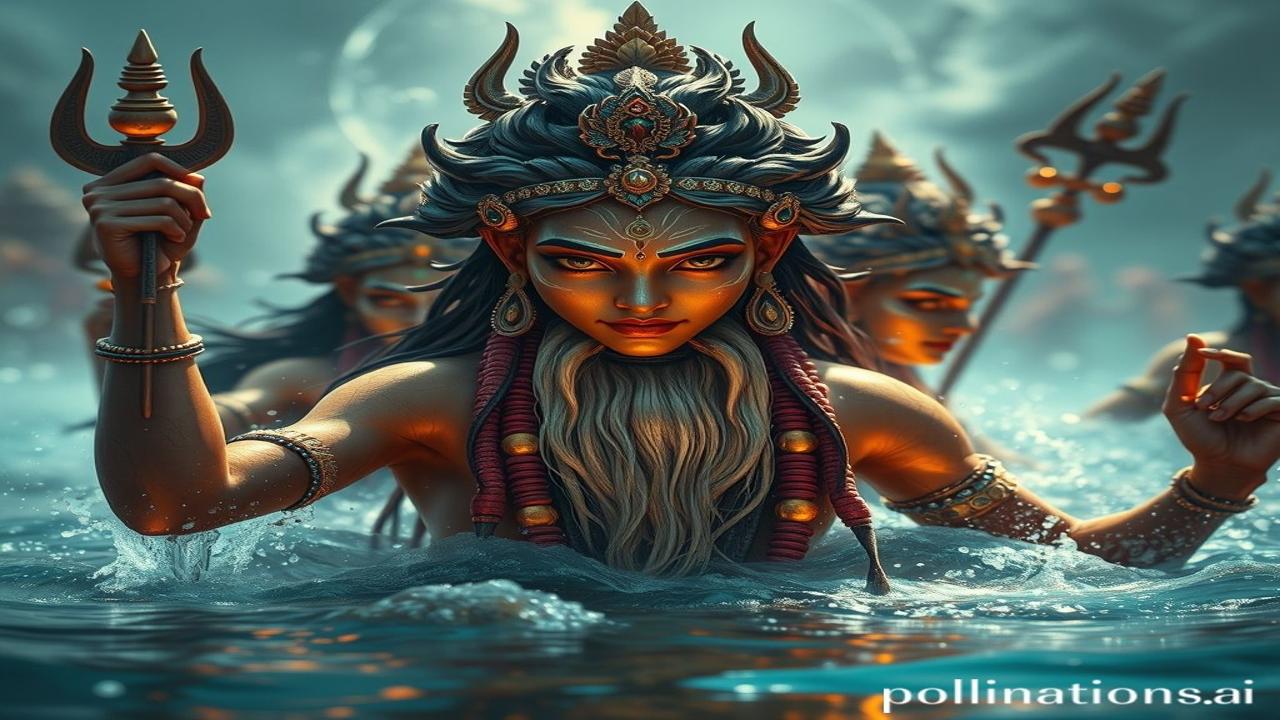Jal Devta: Unveiling the Sacred Rivers and Seas of Indian Mythology
Kabhi socha hai, monsoon ki pehli boond jab dharti ko chuti hai, toh woh ek gehri kahani ke saath aati hai? A story that stretches back thousands of years, woven into the very fabric of our culture and beliefs. This story is about water, Jal, and the powerful deities who govern it. Aao, chalo, delve into the depths of Indian mythology and discover the magic of our Jal Devta.
The Essence of Life: Water’s Role in Ancient India
Water isn’t just H2O in India. It’s Jeevan, life itself. From the snow-capped Himalayas giving birth to mighty rivers to the vast Indian Ocean surrounding our peninsula, water has always been central to our existence. Our civilization, from the Indus Valley to the Gangetic plains, flourished on the banks of rivers. Water deities, therefore, hold immense significance.
Ancient texts like the Vedas, Puranas, and Upanishads are filled with references to water gods and goddesses. Think of Varuna, the Vedic god of the ocean and cosmic order, or Ganga, the personification of the sacred Ganges River. These deities were not just abstract figures; they were an integral part of daily life. They were worshipped for rain, prosperity, and the cleansing of sins.
Key Water Deities in Indian Mythology
- Varuna: The earliest water god, the keeper of cosmic order (Rta), and a powerful deva mentioned in the Rigveda. He was initially the king of all gods before Indra rose to prominence.
- Ganga: The holy Ganges, revered as a goddess and believed to have descended from heaven. Her waters are considered sacred and capable of purifying sins.
- Yamuna: Another sacred river, personified as a goddess and the sister of Yama, the god of death. She’s associated with love and devotion, especially in the context of Krishna’s leelas.
- Saraswati: Initially a river goddess associated with purity and fertility, she later evolved into the goddess of knowledge, music, and arts.
- Samudra: The personification of the ocean, a vast and powerful entity often depicted as the abode of various mythical creatures.
Life Along the Rivers: A Day in Ancient India
Imagine a village on the banks of the Ganga, circa 500 BCE. The sun rises, painting the river with hues of gold and orange. Women clad in simple cotton saris descend to the ghats, their brass kalash gleaming, to collect water for the day. Mantras are chanted, and small diyas are floated on the river, a prayer to Ganga Mata for health, prosperity, and forgiveness.
Fishermen cast their nets, hoping for a good catch to feed their families. Farmers tend to their rice paddies, relying on the monsoon rains blessed by Varuna. Children splash and play in the shallow waters, their laughter echoing across the river. At sunset, the village gathers for aarti, the rhythmic chanting and clanging of bells filling the air, a testament to the enduring reverence for the river goddess.
“Ma Ganga, humein ashish dijiye!” an elderly woman prays, her hands folded. Her words encapsulate the dependence and respect ingrained in their culture. This wasn’t just a prayer; it was a way of life.
Water in Modern India: A Reflection of Our Heritage
Even today, the influence of water deities is undeniable. Ganga Aarti in Varanasi draws thousands of devotees every evening. Kumbh Mela, the world’s largest religious gathering, witnesses millions of pilgrims taking a dip in the holy rivers. Rivers are still considered sacred, and their water is used in countless rituals and ceremonies.
But, there’s also a stark reality. Pollution threatens the very existence of these sacred rivers. The very water that sustains us is being poisoned. It’s a wake-up call to reconcile our traditional reverence with modern responsibility. Bharatiyata demands that we protect our dharohar for future generations.
Myth-Buster: Ganga’s Origin Story
Log samajhte hain ki Ganga seedhe swarg se aayi hain. But that’s only part of the story. Legend has it that King Bhagiratha performed severe penance to bring Ganga down to earth to purify the ashes of his ancestors. Shiva, to lessen the impact of her descent, caught her in his matted locks, allowing her to flow gently onto the plains. So, it wasn’t just a heavenly river; it was a result of human effort and divine intervention.
The Sensory Symphony of a River
Picture this: The cool, damp air near the Ganga, carrying the scent of incense and wet earth. The gentle lapping of water against the ghats, mixed with the sounds of temple bells and devotional songs. The rough feel of the stone steps leading down to the river. The vibrant colors of the saris and flowers offered to the goddess. The taste of charanamrit, blessed water believed to purify the soul. It’s a sensory experience that deeply connects you to the sacredness of water and its deities.
Closing Thought
“Apah Pavitaro Madhavah”, a Sanskrit shloka, translates to “Madhava (Vishnu) purifies through water.” Water isn’t just a resource; it’s a sacred element, a purifier, and a lifeline. Let us remember to treat it with the respect it deserves, echoing the wisdom of our ancestors and ensuring a sustainable future for all.
